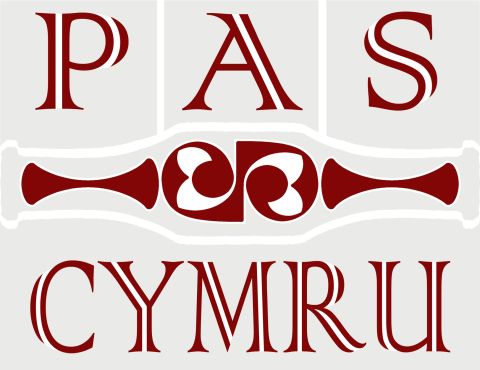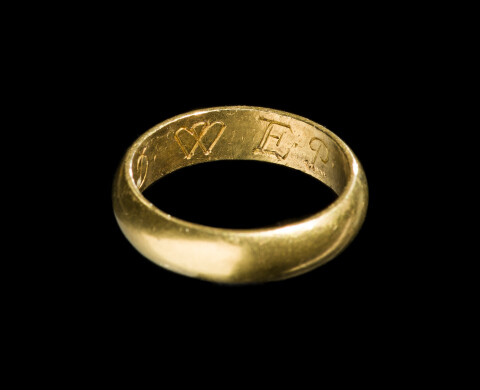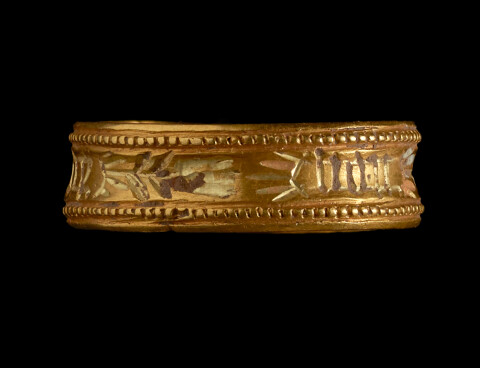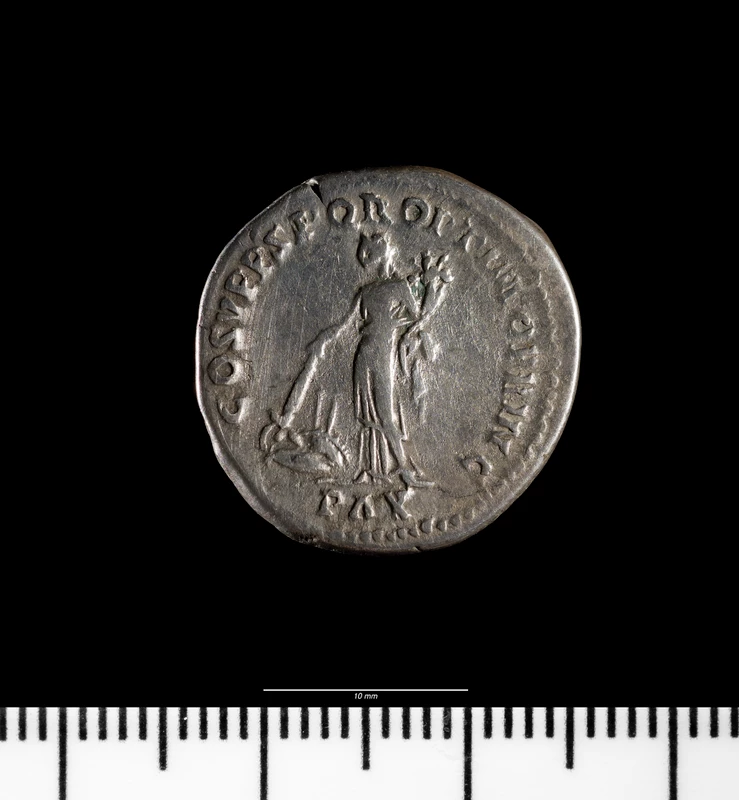Negeseuon Cariad Cyfrinachol: Canfyddiadau Archaeolegol Serchog
, 14 Chwefror 2024
Y llynedd, cafodd 77 canfyddiad ledled Cymru eu hadrodd fel trysor, a phob un dros 300 oed. Fy hoff achosion trysor yw’r rhai sy’n cynnwys gemwaith, yn enwedig modrwyau. Ydy, maen nhw’n eitemau bach hardd, ond maen nhw hefyd yn eitemau personol iawn gyda stori i’w hadrodd bob un.
Dwi’n aml yn meddwl am beth ddigwyddodd i’r eiddo gwerthfawr hyn iddyn nhw gael eu canfod yn y ddaear. Efallai wedi’u colli tra’n cerdded drwy gefn gwlad, a’r perchennog ond yn sylweddoli mewn panig llwyr ar ôl cyrraedd adref. Ffrae rhwng cariadon efallai, gyda’r fodrwy yn cael ei thaflu ar draws cae wrth wylltio. Neu gofio anwylyd drwy osod y fodrwy yn rhywle oedd yn arbennig i’r ddau berson.
Cariad, mewn un ffordd neu’r llall, yw’r thema cyffredin yn fan hyn, felly i ddathlu dydd Gŵyl San Ffolant, dewch i edrych ar rai o’r modrwyau sydd wedi’u datgan yn drysor yng Nghymru yn ddiweddar.
Modrwy arysgrif yn dyddio o ddiwedd y 1600au i ddechrau’r 1700au (achos trysor 21.26 o Gymuned Esclusham, Wrecsam). Mae’r ysgrifen tu mewn yn darllen ‘Gods providence is our inheritance’.
Roedd modrwyau arysgrif yn cael eu defnyddio i rannu negeseuon o gariad, ffydd a chyfeillgarwch rhwng y rhoddwr a’r derbynnydd. Roedd gwisgo geiriau cudd yn erbyn y croen yn cynnig cysylltiad teimladwy a phersonol.
Modrwy fede neu ddyweddïo aur ganoloesol, wedi’i haddurno â dail a blodau wedi’u hysgythru (achos trysor 21.14 o Gymuned Bronington, Wrecsam).
Mae’r arysgrif ar yr ochr allanol yn dweud ‘de bôn cuer’ sef ‘o galon dda’. Mae’r fodrwy yn rhan o gelc o geiniogau a modrwyau yn dyddio yn ôl i Ryfeloedd y Rhosynnau ar ddiwedd y 15fed ganrif.
Modrwy aur, yn dyddio o 1712, (achos trysor 19.41 o Gymuned Llanbradach a Phwll-y-pant, Caerffili).
Mae arysgrif o’r llythrennau cyntaf A. D. ac E. P. ar bob ochr dwy galon wedi ymuno, gan gynrychioli enwau y cwpl sydd wedi dyweddïo neu briodi.
Cofiwch gadw llygaid ar ein cyfryngau cymdeithasol am ddatganiadau trysor newydd ac ewch i’n gwefan am ragor o wybodaeth.
https://amgueddfa.cymru/trysor/
Dwi am orffen gydag ambell i gwestiwn cyffredin am Drysor – mae gan bawb syniad o beth yw trysor, ond beth yn union mae’n ei olygu?
Sut mae Amgueddfa Cymru yn cymryd rhan mewn datganiadau Trysor?
Mae curaduron yn Amgueddfa Cymru yn rhoi cyngor arbenigol ac yn gwneud argymhellion i Grwneriaid ar achosion o drysor o Gymru. Maen nhw’n cymharu canfyddiadau gyda’r diffiniad cyfreithiol o drysor, fel yr amlinellir yn Neddf Trysorau 1996 a Deddf Trysorau 1996: Cod Ymarfer (3ydd Diwygiad) o 2023. Mae gennym ni Swyddogion Canfyddiadau’r Cynllun Henebion Cludadwy yn ein hamgueddfeydd, sy’n cydweithio â’r canfyddwyr, yn aml defnyddwyr datgelyddion metel, sy’n dangos eu canfyddiadau archaeolegol sy’n drysor ac sydd ddim yn drysor, gan eu galluogi i’w cael eu cofnodi a’u hadrodd.
Pam mai Crwner sy’n penderfynu ar achosion Trysor?
Mae rôl Crwneriaid mewn achosion trysor yn dod o ddyletswydd canoloesol y Crwner fel gwarchodwr eiddo’r Goron, sef y brenin neu’r brenhines o’r cyfnod. Yn y Saesneg Ganoloesol, roedd y gair coroner yn cyfeirio at swyddog y Goron, oedd yn deillio o’r gair Lladin corona, sy’n golygu ‘coron’.
Beth sy’n digwydd i ‘Drysor’?
Pan gaiff canfyddiadau eu datgan yn drysor gan Grwneriaid, maen nhw’n gyfreithiol yn dod yn eiddo’r Goron. Gall canfyddwyr a thirfeddianwyr hawlio gwobr, fel arfer yn derbyn 50% yr un o’r gwerth masnachol annibynnol a roddwyd ar y canfyddiad trysor. Mae’r Pwyllgor Prisio Trysorau, grŵp penodedig o arbenigwyr sy’n cynrychioli’r fasnach henebion, amgueddfeydd a grwpiau canfyddwyr, yn comisiynu ac yn cytuno ar yr gwerthoedd a roddir ar drysor. Gall amgueddfeydd achrededig sydd â diddordeb gaffael y trysor ar gyfer eu casgliadau ac er budd ehangach y cyhoedd, drwy dalu’r pris a roddwyd ar ganfyddiad.












